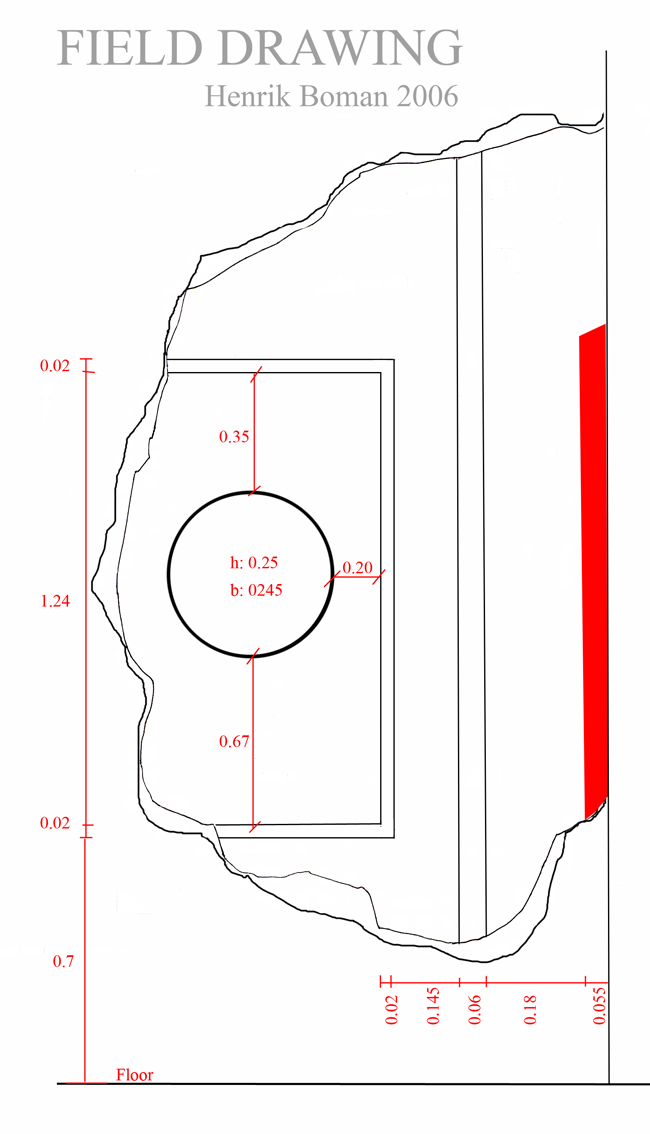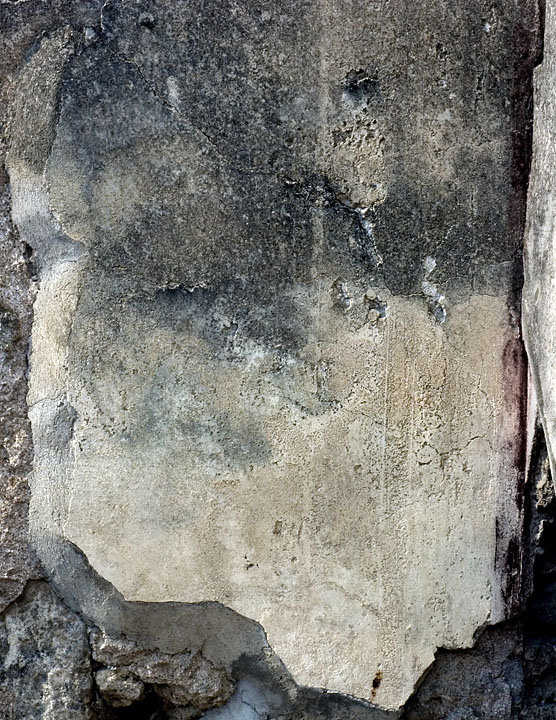Wall decoration (extant)
Description
Henrik Boman & Monika Nilsson
The decoration, as once found in the room, was dated to the 4th style by Mau (1877, 133).
Today, the remains of the decorations are faint, though traceable where the coating surface is less weathered. Traces of the decoration on plaster layer II were noticed in 2004. Except for a vertical red band in the NE corner, only the engraved guidelines for the paintings could be seen. The decoration scheme consisted of the vertical red band (x), c. 0.06m wide, in the NE corner and several vertical lines (v2) that are of what could have been a narrow band of c. 0.06m width some 0.24m from the corner. We cannot today see any other features of this band than vertical straight lines engraved in the plaster.
C. 0.43m from the NE corner, a tondo (diam: 0.245-0.25m) was traced through the engraved lines in the plaster; it was framed by a c. 0.02m wide stripe preserved on all sides except on the W where the plaster is destroyed. The frame is 1.24m high, placed 0.7m above the floor and 0.44m from the E wall. The tondo does not seem to be placed symmetrically within the height of the framing; it is placed 0.67m from its lower line, and 0.35m from its upper.
The modern mending paste is applied onto layer I, which indicates that layer II had fallen off before the previous renovation of the building (in 1980?).
Mau describes the decoration of room c, not specifying on which wall, as follows:
"Il cubicolo a sin. dell´atrio, dipinto a fondo bianco nell´ultima maniera pompeiana, ha in mezzo agli scompartimenti degli Amori che portano oggetti non più riconoscibili, un capro, e due medaglioni svaniti." (Mau 1877, 133)
We can identify the partitions of the panels, and the tondo that could have contained the cupids, though the unidentifiable objects in the hands of the cupids indicate a bad state of preservation of the decoration already in the 1900s.


